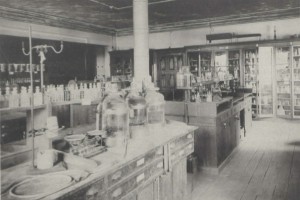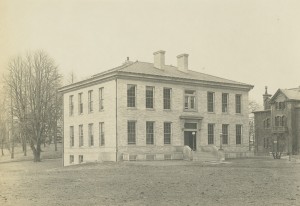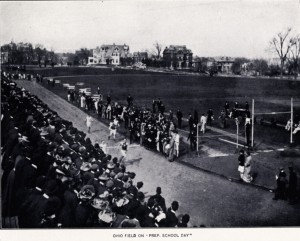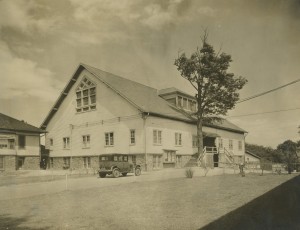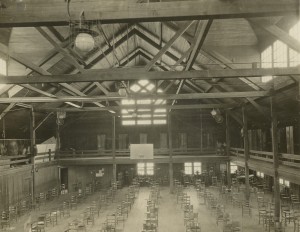Along with its scenic location, the move uptown provided other advantages. The extra space would allow the University to build more facilities that could not have been constructed at Washington Square. For example, the university had the capability to build larger laboratories.
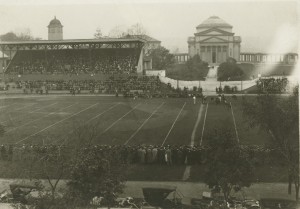
The Ohio Field, with the Gould Memorial Library in the background. The NYU football team played on this field for a number of decades.
MacCracken also sought to expand NYU’s athletic training by building fields and gymnasiums. Although physical education is part of practically every university today, emphasis on athletics in education only emerged in the late 19th century.
Constructed from barns and stables present on the Mali Estate, the gymnasium, dubbed “the Violet Hut,” or Cann’s barn after athletic director Frank Cann, was one of the first structures built on campus and was ready for use as early as 1894. Gymnasiums were quite uncommon in the 1890s. The earliest gyms can been dated to Harvard and Yale in 1859, followed by Bowdoin and Amherest in 1860 and Brown University in 1890.

NYU converted a number of the buildings on the Mali Estate into NYU facilities. Pictured is Charles Butler Hall, formerly the Mali House, which served as the main residence hall until 1898.
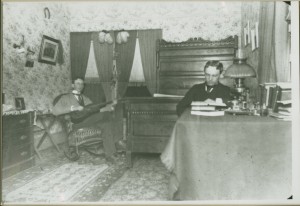
Interior of dormitory, 1890s. Always concerned with elevating NYU into a an elite institution, MacCracken hoped dormitories would attract out of state students.
Another important expansion was in housing. Looking to England’s universities for inspiration, dormitories reflected the Oxford-Cambridge ideal of “living and learning” together. MacCracken intended on implementing this principle at NYU. The Mali Mansion, renamed Charles Butler Hall, became the first dormitory on campus. It housed 30 students with 22 rooms.

